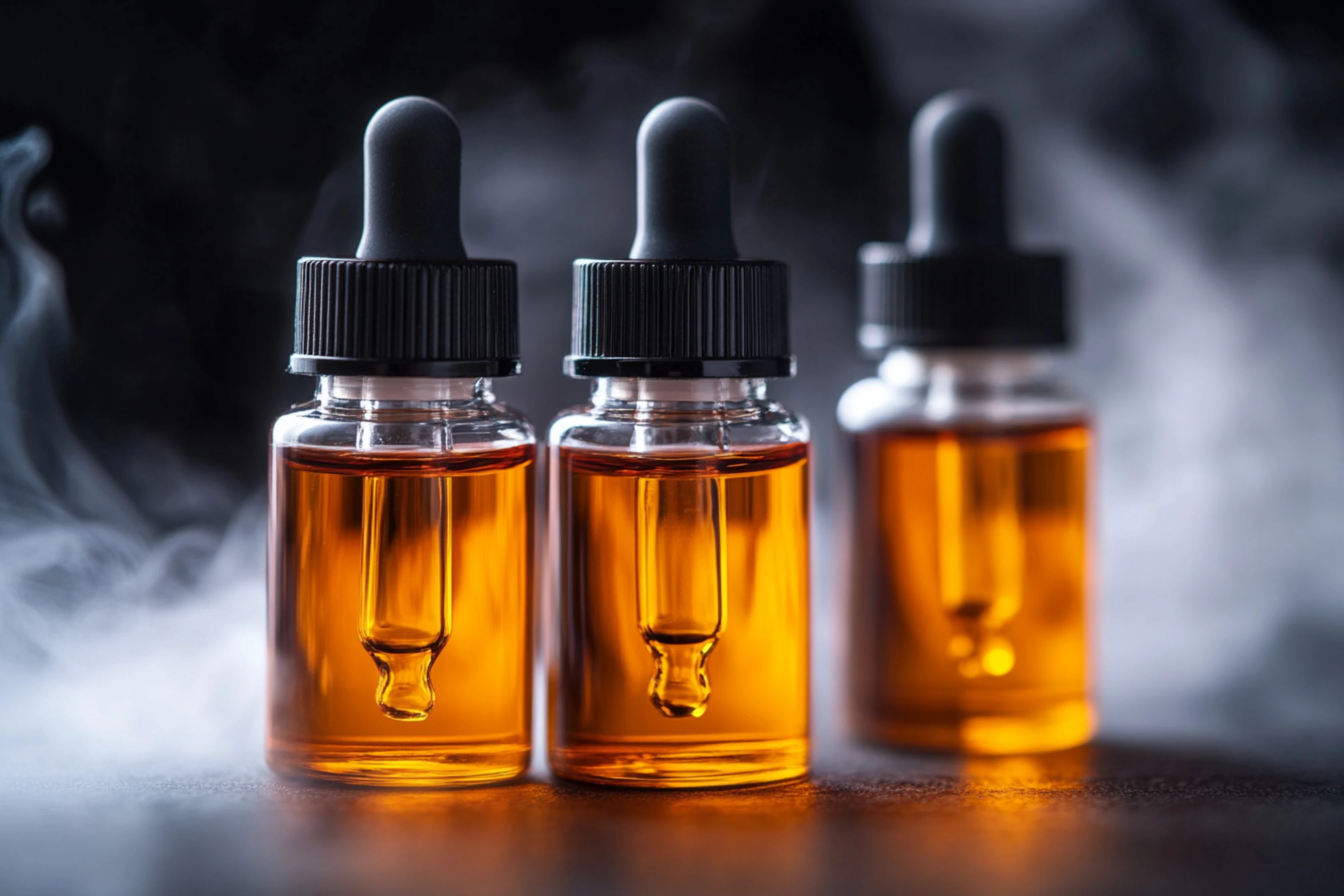1. What E-liquid / “Vape Oil” is Made of — Main Components
Propylene Glycol (PG) — a light, odorless liquid used as a carrier for flavorings and as a component that delivers the “throat hit.” PG dissolves flavorings well and helps deliver nicotine effectively.
Vegetable Glycerin (VG, osmotic carbohydrate) — a thick, slightly sweet liquid that increases vapor density. It produces large and dense vapor clouds. The PG/VG ratio determines the vapor volume and the intensity of the vaping experience.
Nicotine
-
Free-base nicotine — the classic form of nicotine, used for decades. At higher concentrations it often causes a harsher, less pleasant throat sensation.
-
Nicotine salts — a protonated form of nicotine, allowing devices to provide higher nicotine concentrations without excessive irritation, unlike free-base. This form changes the absorption speed, delivering a faster and stronger effect.
Flavorings — most flavoring substances in vape liquids were originally developed for the food industry. However, not all of them are researched or considered safe when inhaled. Some substances, such as diacetyl, have rarely but seriously been linked to lung diseases, particularly bronchiolitis obliterans (widely known as “popcorn lung”).
2. How E-liquids Are Used — Application Methods and Device Types
Disposable vapes — pre-filled with e-liquid, designed for use until the liquid or the battery runs out. Usually contain PG/VG blends and different nicotine strengths.
Refillable pod systems & open-tank devices — allow users to choose their preferred PG/VG ratio and nicotine concentration.
Cartridges / Black market THC cartridges — unregulated and often dangerous variants that may contain oily carriers (e.g., MCT oil, vitamin E acetate). Such components have been linked to EVALI (e-cigarette or vaping use-associated lung injury).



